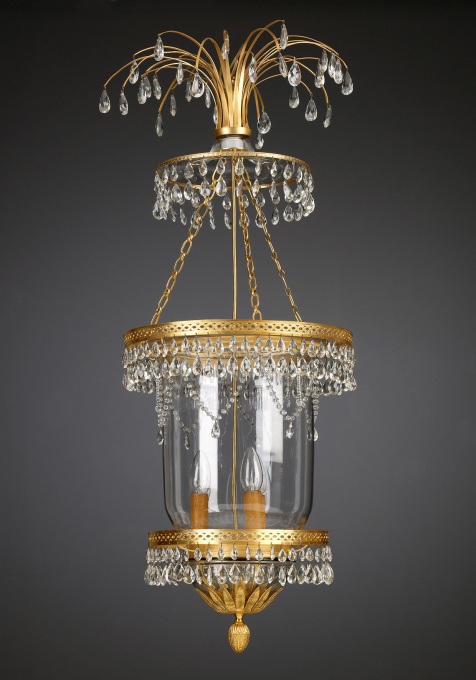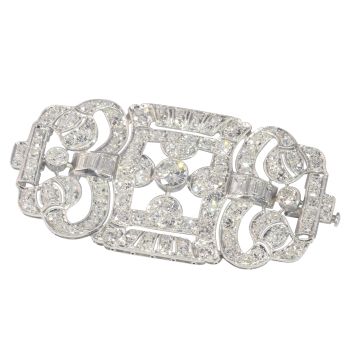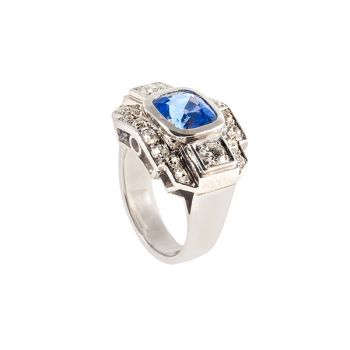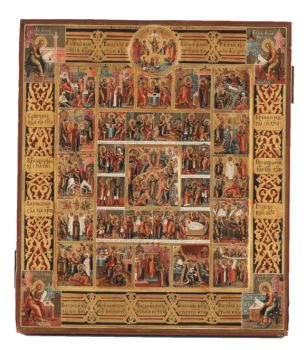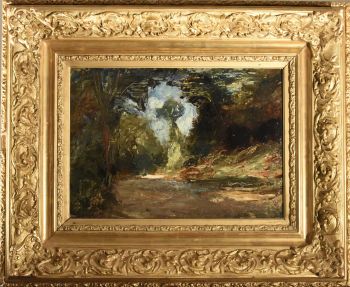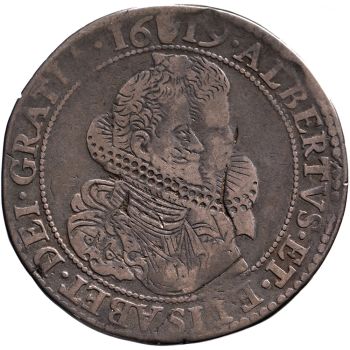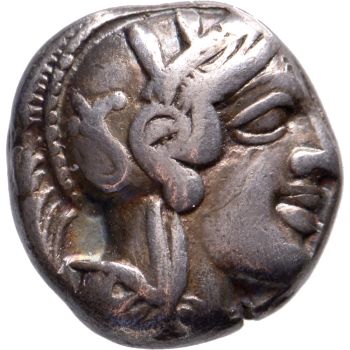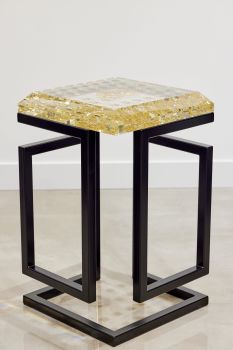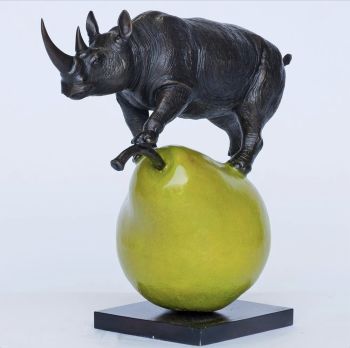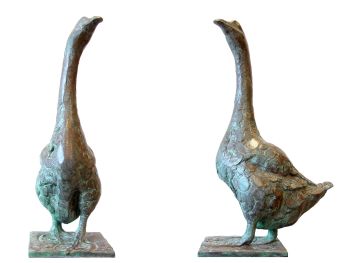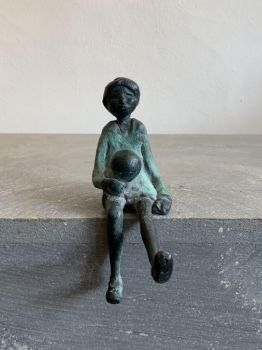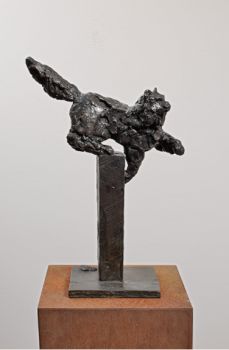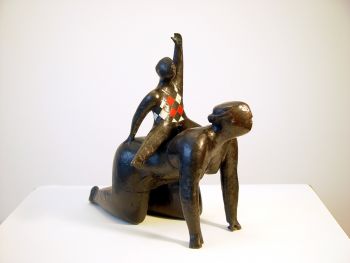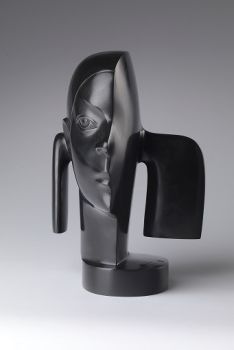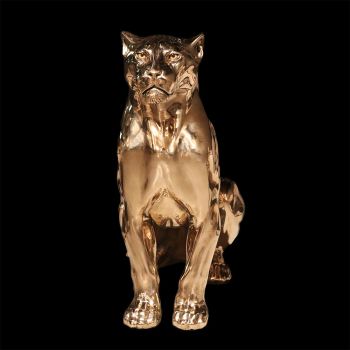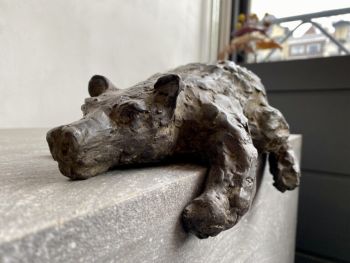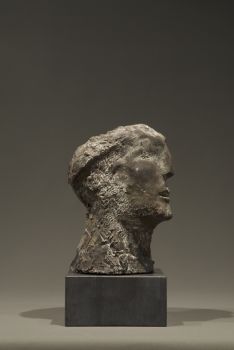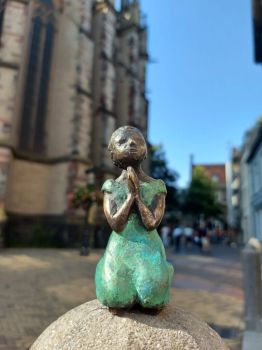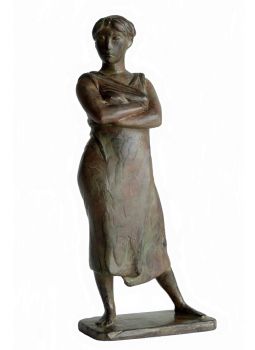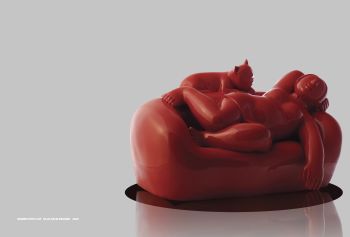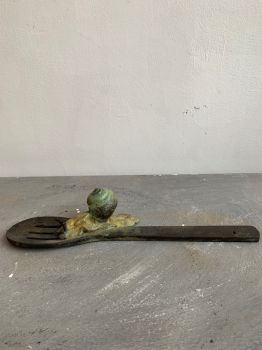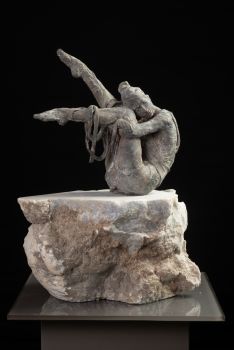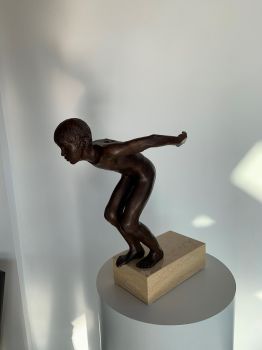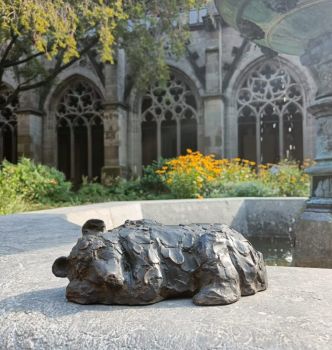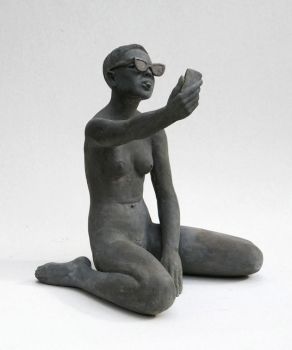Hall Lantern, Saint Petersburg 1800
Artista Sconosciuto
BicchiereBronzoOroCristalloMetalloDoratoPietra preziosa
100 cm, ø 37 cm
Attualmente non disponibile tramite Gallerease
- A proposito di opere d'arteA hall-lantern with three lights that are placed within a bell jar.
These lanterns were ideal for lighting the hall, because the bell jar protects the candles from being blown out by the draft of the opening front door. This lantern is elaborately decorated with cut crystal pear-shapes, that reflect the light of the candles.
Saint Petersburg became capitol of the Russian Empire in the 18th century. Czar Peter the Great was the first to settle himself in the city. From 1762 onwards it was the ostentatious Catherine the Great who took residence in Saint Petersburg. She expanded the city with palaces and important buildings. The Russian nobility had to follow resulting in a wave of renovation and decoration of their domicile. This resulted in an explosion of factories and workshops for decorative arts and luxury goods around Saint Peterburg. As soon as 1735 the first glassworks were founded near the city, soon to be followed by many more. The various enterprises manufactured glass and crystal, tableware, vases, mirrors and parts for lanterns and lighting, all of extremely high quality. - A proposito di opere artista
Può succedere che un artista o un creatore sia sconosciuto.
Alcune opere non sono determinate da chi sono state realizzate o sono state realizzate da (un gruppo di) artigiani. Esempi sono statue dell'antichità, mobili, specchi o firme non chiare o leggibili ma anche alcune opere non sono affatto firmate.
Inoltre puoi trovare la seguente descrizione:
•"Attribuito a …." A loro avviso probabilmente opera dell'artista, almeno in parte
•“Studio di ….” o “Officina di” A loro avviso un'opera eseguita nello studio o nella bottega dell'artista, eventualmente sotto la sua supervisione
•“Cerchio di…” A loro avviso un'opera del periodo dell'artista che mostra la sua influenza, strettamente legata all'artista ma non necessariamente al suo allievo
•"Stile di..." o "Seguace di..." A loro avviso un'opera eseguita nello stile dell'artista ma non necessariamente da un allievo; può essere contemporaneo o quasi contemporaneo
•“Modalità di…” A loro avviso un'opera nello stile dell'artista ma di epoca successiva
•"Dopo …." A loro avviso una copia (di qualsiasi data) di un'opera dell'artista
•“Firmato…”, “Datato…” o “Iscritto” A loro avviso l'opera è stata firmata/datata/inscritta dall'artista. L'aggiunta di un punto interrogativo indica un elemento di dubbio
•"Con firma....", "Con data...", "Con iscrizione..." o “Riporta firma/data/iscrizione” a loro avviso la firma/data/iscrizione è stata aggiunta da qualcuno diverso dall'artista
Artwork details
Related artworks
Artista Sconosciuto
Anello retrò in platino con diamanti e zaffiro1940 - 1950
Prezzo su richiestaLyppens Juweliers
Artista Sconosciuto
UITGEBREIDE FEESTDAGENIKOON MET PASSIECYCLUS19th century
Prezzo su richiestaHeutink Ikonen
Artista Sconosciuto
Gobelet vénitien ailé1650 - 1700
Prezzo su richiestaPeter Korf de Gidts - Antiquairs
1 - 4 / 12 A cura di
A cura diDanny Bree
Artista Sconosciuto
A rare Japanese export lacquer medical instrument box1650 - 1700
Prezzo su richiestaZebregs & Röell - Fine Art - Antiques
1 - 4 / 24Artista Sconosciuto
Set Franse Empire Pendules / Empire Lectura penduleearly 19th
Prezzo su richiestaKuipers Kunst & Antiek
1 - 4 / 24

